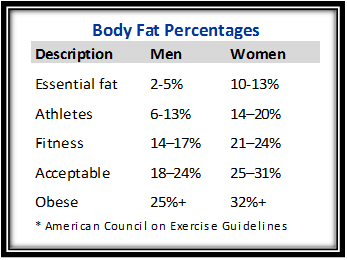When I first meet a training, or coaching client, I normally ask, “How much would you like to change your weight?” Most of them pause, shrug their shoulders, and then reply, “I’m not sure, maybe…” then take a guess at how much weight they want to lose.
The amount of weight you want to lose (or gain) doesn’t have to be a guessing game. There’s a formula to calculate your goal weight more precisely so you can have that magic number in your head that motivates you to eat well and train hard.
Old Ideal Body Weight Formula: BMI
The most common method of measuring your ideal weight is using the Body Mass Index (BMI), which measures the relationship between your weight and your height.
Do you notice anything wrong with the traditional BMI calculation, which is used in almost every weight loss study? It doesn’t take into account your body fat percentage! In fact, Ancel Keys is given credit for popularizing BMI in a 1972 paper, but he explicitly stated BMI was appropriate for population studies, NOT individual diagnoses.
Using BMI, just about every NFL football player is considered obese, even though most have very low body fat percentages. Conversely, the number of “overfat” Americans is believed to be higher than what BMI predicts. You don’t have to be overweight by the BMI Index to be considered “overfat” on a body fat basis.
So here’s a BMI calculator from the Mayo Clinic for your reference. A value between 18.5 and 25 is considered a normal weight:
BuiltLean.com Ideal Body Weight Formula
It turns out there’s a MUCH better way to calculate your ideal weight that takes into account your body fat percentage. Here it is:
Lean Body Mass/(1 – Desired Body Fat Percentage)
where Lean Body Mass (LBM) = Your Body Weight – (Your Body Weight x Your Current Body Fat Percentage)
Just to be clear, your LBM is your “fat free” mass, in other words, everything in your body that’s not fat: your bones, blood, muscle, and organs.
Let me give you an example of this ideal body weight formula in action so you can see why it’s so useful. Let’s take Jake who is 200 pounds and has 22% body fat. Using this information, we know that his LBM is 156 pounds and the amount of body fat he has is 44 pounds. So what should Jake’s ideal weight be? Well that’s really up to him. For most men, a mid double digit body fat percentage of say 15% is considered pretty good. Here’s a chart for your reference:

So now, here’s the important part. We are going to assume Jake doesn’t lose any muscle because he has been following all the tips I’ve discussed so far on BuiltLean.com. So keeping his LBM at 156 pounds, Jake needs to drop 16 pounds of fat to reach his desired body fat percentage of 15%. His ideal weight is 184 pounds in this scenario. Here’s how Jake’s ideal body weight calculation looks:
156/(1 – 0.15) = 184 pounds
See how valuable this is now? Your body weight doesn’t have to be a guessing game anymore. I’ll be following up with some articles on the various ways to calculate your body fat percentage. For now, I advise going to your local gym and having one of the trainers do a skin fold body fat measurement, or you can grab an Accu-Measure Personal Body Fat Caliper for $6 at Amazon.com and do it yourself (it’s surprisingly accurate for most people).
for $6 at Amazon.com and do it yourself (it’s surprisingly accurate for most people).
I hope this has cleared up some confusion for you and highlighted the importance of thinking about your weight in terms of your body fat percentage.




0 comments:
Post a Comment